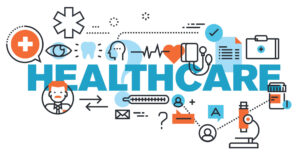While Congress and the Administration work furiously to address the health-related impacts of the Novel Coronavirus (COVID-19) pandemic, they have also taken steps at an unprecedented rate to head off the longer-term effects of the economic fallout from necessary business closures and supply-chain interruptions, including helping workers, who may be suffering the most from the temporary shutdowns.
Pursuant to the Act’s Summary, “this bill responds to the coronavirus outbreak by providing paid sick leave and free coronavirus testing, expanding food assistance and unemployment benefits, and requiring employers to provide additional protections for health care workers.”
Included in this proliferation of legislation is the Families First Coronavirus Response Act (FFCRA), (H.R. 6201) introduced on March 11, 2020. It moved through the House of Representatives (working closely with the Administration) and was passed by the House on March 16, 2020, with amendment. Taken up immediately upon its receipt, the Senate voted overwhelmingly for the bill just two days later on March 18, 2020, and, President Trump signed the bill into law later that same day, as he said he would.
Specifically, the bill provides FY2020 supplemental appropriations to the Department of Agriculture (USDA) for nutrition and food assistance programs, including:
- the Special Supplemental Nutrition Program for Women, Infants, and Children (WIC);
- the Emergency Food Assistance Program (TEFAP); and
- nutrition assistance grants for U.S. territories.
The bill also provides FY2020 appropriations to the Department of Health and Human Services for nutrition programs that assist the elderly.
The supplemental appropriations provided by the bill are designated as emergency spending, which is exempt from discretionary spending limits.
The bill modifies USDA food assistance and nutrition programs to
- allow certain waivers to requirements for the school meal programs,
- suspend the work requirements for the Supplemental Nutrition Assistance Program (SNAP, formerly known as the food stamp program), and
- allow states to request waivers to provide certain emergency SNAP benefits.
In addition, the bill requires the Occupational Safety and Health Administration to issue an emergency temporary standard that requires certain employers to develop and implement a comprehensive infectious disease exposure control plan to protect health care workers.
Specific Provisions for Employers/Employees
Emergency Sick Pay
The bill includes provisions that establish a federal emergency paid-leave benefits program to enhance payments to certain employees affected by the pandemic. Employers with fewer than 500 employees are required to provide two weeks’ worth of paid sick leave if employees are unable to work because of being subject to quarantine or isolation, are suffering symptoms of the virus, are caring for someone who is in quarantine or isolation, and/or have children in schools that have closed.
This emergency paid sick leave is to be available for use “immediately,” no matter how long the employee has been employed. Further, the payments must be made available in addition to any paid sick leave an employer might already provide on its own or as required by local or state law. This paid sick leave does not create a requirement to pay for unused emergency paid sick leave upon termination. Further, it does not apply retroactively.
Those paid sick leave payments noted above may be used when an employee is unable to either work or “telework” for any of the following causes:
- The employee is subject to a government quarantine or isolation order related to COVID-19;
- The employee has been advised by a healthcare provider to self-quarantine due to COVID-19;
- The employee has symptoms of COVID-19 and is seeking a medical diagnosis;
- The employee is caring for an individual subject to either (1) or (2);
- The employee needs to care for a child whose school or place of care is closed or whose childcare provider is unavailable due to coronavirus;
- The employee is experiencing any other substantially similar condition specified by the Secretary of Health and Human Services.
This sick leave is paid at the employee’s regular rate of pay if it is used for purposes (1), (2) or (3). That pay, however, is capped at $511 per day ($5,110 in total), corresponding to the caps on tax credits provided to offset the costs of this mandated paid sick leave.
For employees who use this leave for purposes (4), (5) and (6), the benefit is provided at two-thirds the employee’s regular rate of pay. This, too, is capped, but at $200 per day ($2,000 total), again corresponding to the caps on the tax credits.
There are no certification requirements. However, an employer may require an employee to follow reasonable notice procedures following the first workday (or portion thereof) when an employee opts to take this paid sick leave. An employer cannot require the employee utilizing the leave to search for or find a replacement employee to cover the hours missed.
Under the bill, an employer may not discipline, discharge or discriminate in any other manner against an employee who takes this paid sick leave. Failure to provide this paid leave could subject the employer to requirements to pay both back pay and statutory damages equal to the amount of back pay.
To assist employers with the costs of these employee leave payments, the bill provides tax credits that will provide offsets through the payment of lower taxes. (see details below)
Emergency Family Medical Leave Expansion
Under the expanded law, an employer must give Emergency Family Medical Leave to eligible employees if that employer is a private employer and had fewer than 500 employees for each working day during each of 20 or more calendar weeks of the current or preceding year. An employee is eligible for Emergency Family Medical Leave if the employee worked at least 30 calendar days for the employer prior to taking leave.
An employee may take up to 12 weeks of Emergency Family Medical Leave. The first 10 days of this leave may be unpaid, but the employee must be allowed to use accrued paid leave in order to be paid during the first 10 days.
After the first 10 days, the employer must continue to provide leave and pay to the employee at least two-thirds of the employee’s usual rate of pay for the employee’s usual number of scheduled hours. If the employee’s hours vary, then the employee’s usual number of scheduled hours must be based on the employee’s average scheduled hours during the last 6 months or the employer’s reasonable expectation of hours to be worked at the time of hire. The maximum required pay is $200 per day or $10,000 total to the employee.
After returning from Emergency Family Medical Leave, the employer must restore the employee to his/her former position. An employer with fewer than 25 employees need not restore the employee to his/her former position if the position no longer exists, although the employee must later be restored if the position is restored before the earlier of 12 months or the end of the COVID-19 emergency.
Employer Tax Credits
To assist employers with the costs of these employee leave payments, the bill provides tax credits that will provide offsets through the payment of lower taxes. The tax credit is a dollar-for-dollar reduction to the employer’s portion of social security tax. A self-employed individual may take the credit against his/her self-employment tax.
The U.S. Treasury will make deposits to the Social Security Trust Fund equal to the amount of tax credits given.
Unemployment Assistance
The bill boosts unemployment benefits, providing $1 billion in state grants to cover processing and paying unemployment insurance. It also raises the amount of assistance to states with high unemployment for those who have exhausted benefits already.
The goal of these provisions is to make qualification for unemployment less restrictive and more available. The actual payments of unemployment benefits will continue to be at the state level with additional funding provided by the federal government through the new bill.
Concluding Thoughts
While motivations behind this legislation are admirable, and it is certainly refreshing to see bipartisan efforts by both chambers of Congress working towards a common cause for the good of all Americans, the provisions in this bill are likely to cause cash flow challenges for many privately-held business owners.
Because the tax credit (meant to make employers whole) is only realized when the payroll tax is paid, there may be cash flow concerns for certain employers. Additionally, because the initial two work weeks of emergency paid sick leave covers not only employees who have COVID-19 or are suspected to have COVID-19 but also employees subject to a quarantine or isolation order, this benefit could possibly be used by a broad swath of employees as more states and cities consider such isolation orders.
Regardless of financial impact, there is also an administrative burden – covered employers must adjust their policies to comply, including communicating the specifics of the new policies to their employees.
We recognize the impact of these new payment obligations on privately-held employers with 500 or fewer employees is going to present a number of complex issues. As always, Grossman Yanak & Ford LLP stands ready to assist in meeting these difficult challenges and in helping employers assess the impact on their businesses. We can help you to develop strategies to not only meet your obligation under these new rules but also how best to mitigate the financial burden.
In the interim, with questions or comments, please feel free to contact Bob Grossman or Don Johnston at 412-338-9300.
Related posts:






